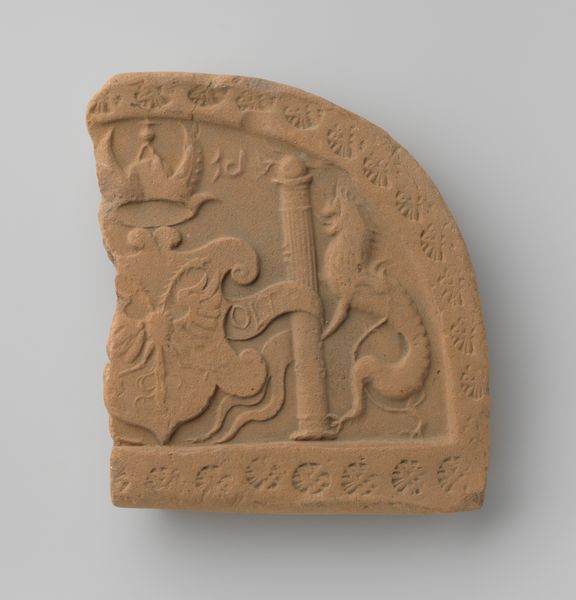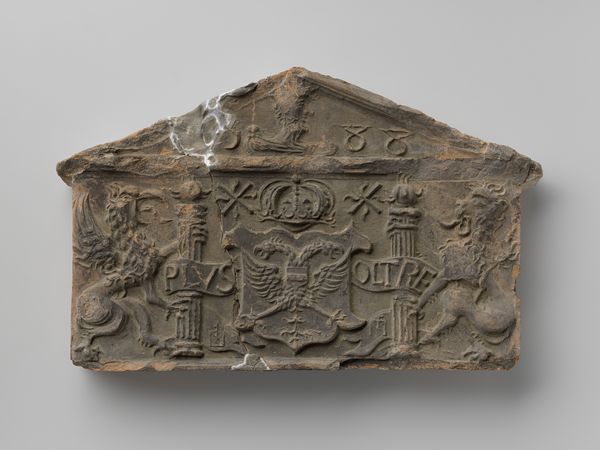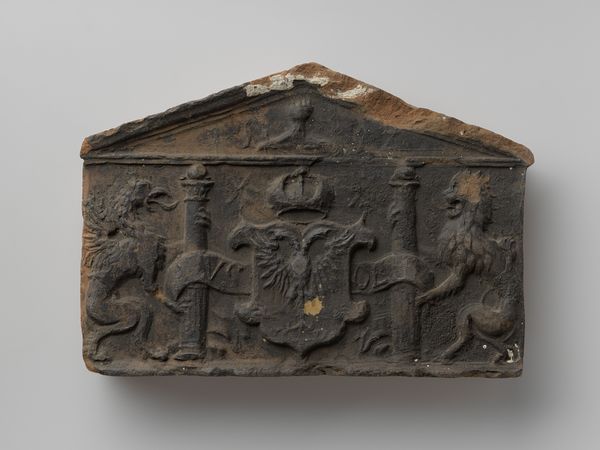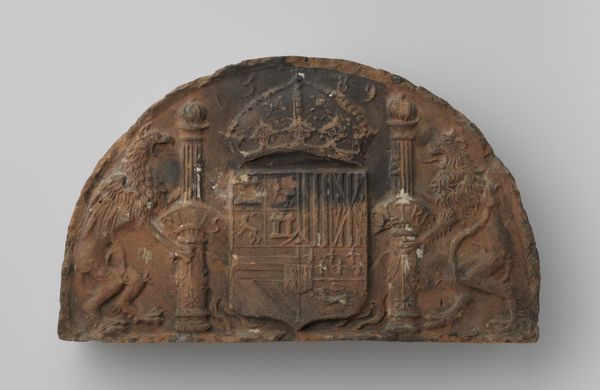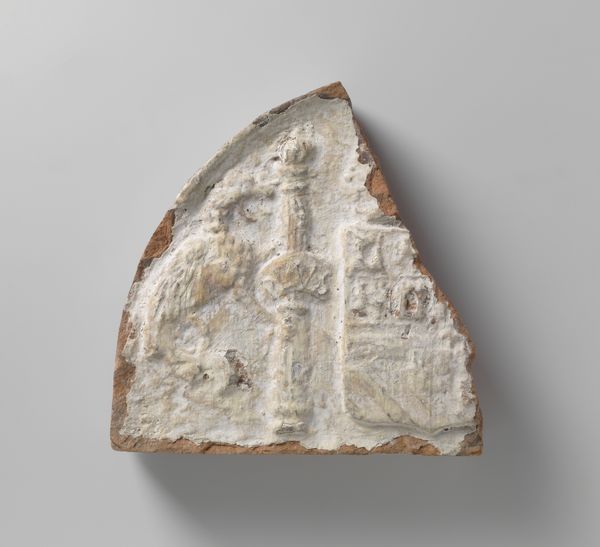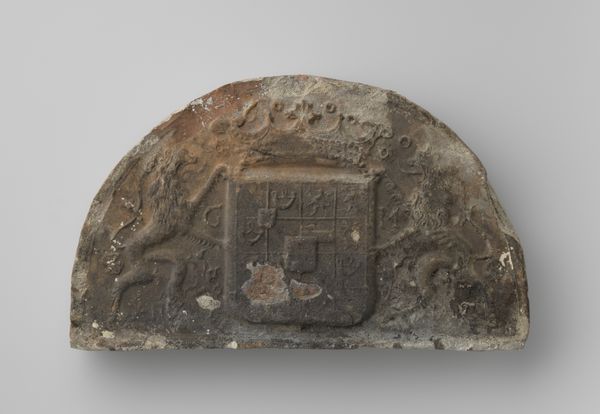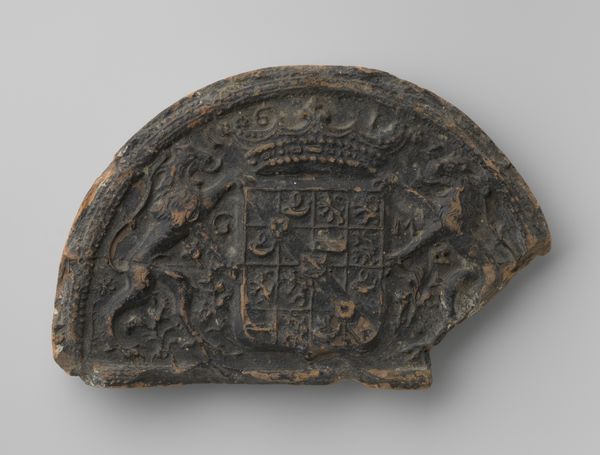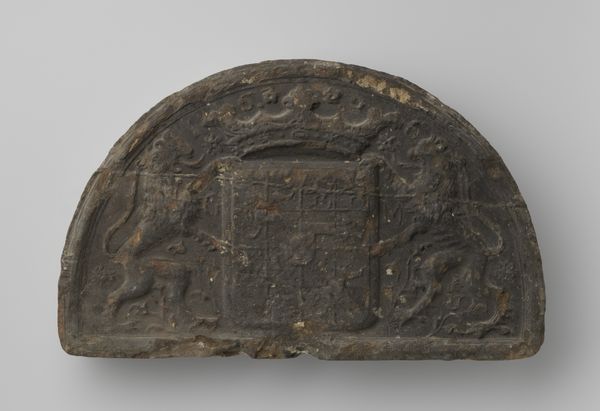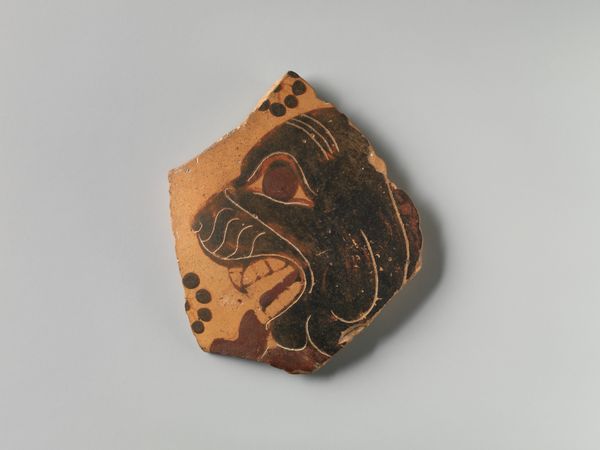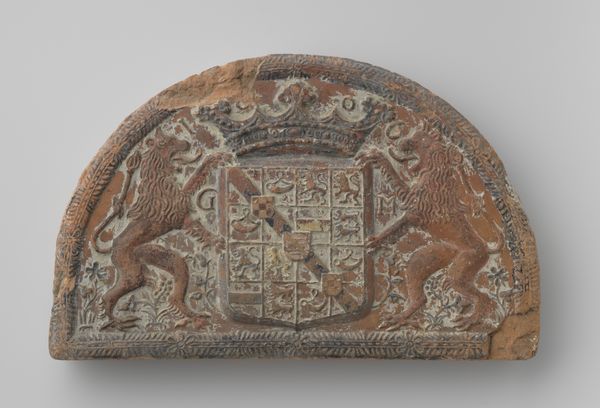
relief, sculpture, terracotta
#
medieval
#
sculpture
#
relief
#
11_renaissance
#
stoneware
#
sculpture
#
terracotta
Dimensions: height 23.5 cm, width 21 cm, depth 6.2 cm
Copyright: Rijks Museum: Open Domain
This is a fragment of a Haarddeksteen, or a hearth tile, an anonymous work adorned with the coat of arms of Charles V. The double-headed eagle, a symbol inherited from the Roman Empire, stands as a prominent emblem of power. The eagle, with roots stretching back to ancient mythologies, represents dominion, foresight, and courage. Note the pillars of Hercules flanking the eagle, they are evocative of strength and boundary, signifying Charles V's vast territories and imperial authority. The pillars of Hercules, which once marked the edge of the known world, appear here in the context of an emperor who claimed dominion over vast territories. The emotional weight carried by this imagery is considerable: Charles V wished to be seen as the guarantor of order and the defender of Christendom. Observe how these symbols resonate across centuries. The eagle, employed by emperors and nations alike, continues to evoke power. The pillars, a memory of ancient boundaries, remind us of the cyclical nature of empires. These visual motifs recur, adapting to new contexts, and engage our collective memory.
Comments
No comments
Be the first to comment and join the conversation on the ultimate creative platform.
